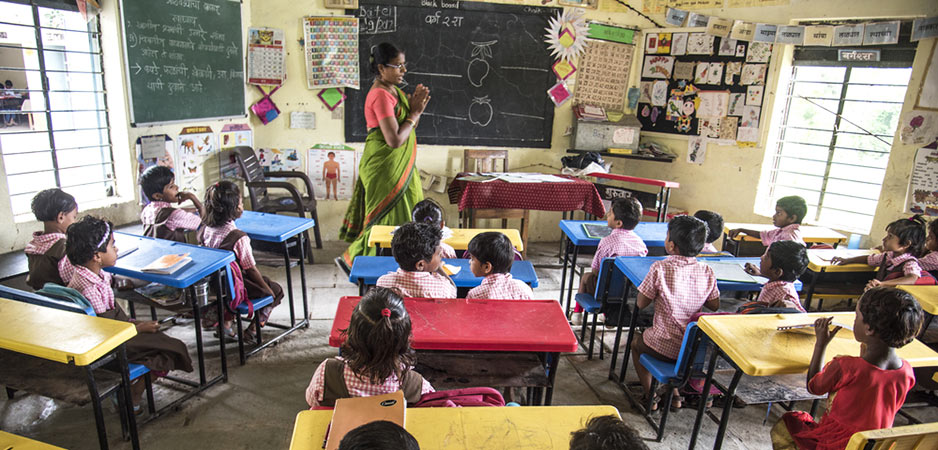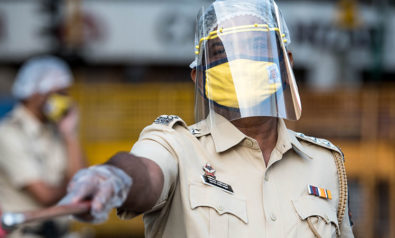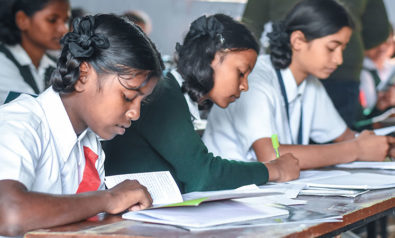The union cabinet of the government of India recently announced its 2020 National Education Policy (NEP). This is the first education policy developed by a non-Congress party government since independence. Coming 34 years after the last formulation of a fully-fledged education policy, Indians anticipated a significant pivot in the education system to leverage the country’s demographic dividend. India’s current political leadership claimed it wanted to make the country a “vishwa guru,” the Sanskrit word for a world teacher, and would dramatically reform its education. Therefore, great expectations from the NEP seemed natural.
360° Context: The State of the Indian Republic
Prima facie, the NEP might make many Indians happy because it has something in it for everyone. However, a careful read reveals that the NEP does little to change the direction of our education. It largely promises cosmetic changes. In essence, the NEP is a collection of myriad aspirational expressions, not a coherent policy framework.
The ideologues of the ruling Bharatiya Janata Party (BJP) may find the references to ancient wisdom of India heartening. It might lead to young Indians learning that Banabhatta outlined 64 forms of art or Sushruta pioneered glorious surgical techniques. However, it does little to prepare the young to shape the future.
Given my advocacy of long-term policymaking, I should have reasons to thank those who drafted the NEP. They have taken a 20-year view and set goals for 2040. Just as we plan over a 20-year timespan, not a five-year one, for our children, so should our national plans. Yet a bad 20-year plan is worse than its bad five-year counterpart, and that is my problem with the NEP.
What Are the Changes Proposed?
Let me pick on a key aspect of the plan. The NEP proposes the three-language formula. This means that, all over the country, students will learn three languages. These are Hindi, English and the regional language of the respective state. The government believes that it is abolishing language barriers in the country. Instead, this has triggered off a storm in non-Hindi speaking states. In Tamil Nadu, there has been long-standing opposition to Hindi as compulsory learning or administration. The three-language formula has been around since 1968 but failed to take off because parts of India resent the domination and imposition of Hindi.
There is another tiny little matter. Demand for learning in English has taken off around the country, including and especially in Hindi-speaking areas. Thanks to the legacy of colonization, the advent of globalization and a host of other factors, English has emerged as the language of success in India. The people do not care for the three-language formula one jot. Yet the BJP’s NEP is flogging a dead horse.
Many have lauded the NEP for promoting multidisciplinary education. This has long been discussed. At far too young an age, Indians are cast into rigid silos of arts, science and commerce. As a result, they lose love for learning and end up at lower-productivity levels than their counterparts in Europe or East Asia. The NEP allows students to change disciplines more easily along the same lines as in the US. However, this flexibility will only benefit the country if quality education is offered in different disciplines. For instance, English and history are taught terribly in a rote-based manner in most schools. Shifting from science or commerce to study either subject might enable a student to pass more easily but would achieve little else.
The NEP offers greater flexibility in earning degrees either over a period of time or across subjects. Offering multiple entry and exit points in higher education is a good idea. It may help people find their true interests and give them second or third chances in life. However, the key logical next step is to unlink degrees from jobs, where academic degrees are immaterial. A new form of recruiting that is based on demonstrated merit and knowledge of the work itself is the way forward for the country. The NEP has missed that opportunity to curb India’s fixation with degrees and promote a culture of focus on work.
Supporters claim that the NEP is focusing on work by combining vocational education with school and college education. In due course of time, vocational education will be on par with other degree programs. A carpenter, a plumber or an electrician will command the same respect as someone with a master’s degree in literature, history or sociology. This argument is disingenuous. Increasing “respect” for vocational programs involves changes in social perceptions. It requires much deeper and drastic changes than those envisaged by the NEP.
Bad Thinking and Poor Drafting
In fact, the NEP is full of seemingly good ideas that have simply not been thought through. It has passing references to fostering creativity and instituting a 360-degree view in student report cards. It also throws in digital education, adult learning and lok-vidya (folk education) about local heritage and culture. Yet the NEP fails to tell anyone how these ideas will come into practice.
The drafters of the NEP forget that soundbites are not policy. Nor are tweaks. Turning a 5+3+2+2 system into a 10+2 or 5+3+3 one does not change the way students are taught or the way they learn. Similarly, giving a certificate after year one, a diploma after year two and a bachelor’s after year three does not change syllabi, pedagogy and learning. Yes, a student can drop out after a year with a certificate, but would that be worth the paper it was written on?
To change education, India must improve the quality and commitment of its teachers. Training them in institutions with new names or giving students multiple exits or entries in a four-year bachelor of education program offers flexibility in getting a degree but does not improve the quality of their instruction.
In comparison with earlier education policies, the National Education Policy is a poorly-drafted document. It is a testament to how India has regressed under the BJP. The demonetization policy was instituted by a hasty, poorly-drafted document. It seems that the government does not have the intellectual policymaking firepower of its predecessors.
One sentence in paragraph 4.13 on page 14 of the NEP captures drafting woes common to recent government documents when it proclaims: “In particular, students who wish to change one or more of the three languages they are studying may do so in Grade 6 or 7, as long as they are able to demonstrate basic proficiency in three languages (including one language of India at the literature level) by the end of secondary school.”
Does this mean that students can change the languages they are learning as long as they can travel into the future, i.e., Grade 12, and prove they are proficient in the new languages they choose? Or does it mean that students must be prepared to prove proficiency in the languages they choose in Grade 12? Sadly, the NEP is full of such unadulterated absolute nonsense.
The views expressed in this article are the author’s own and do not necessarily reflect Fair Observer’s editorial policy.
Support Fair Observer
We rely on your support for our independence, diversity and quality.
For more than 10 years, Fair Observer has been free, fair and independent. No billionaire owns us, no advertisers control us. We are a reader-supported nonprofit. Unlike many other publications, we keep our content free for readers regardless of where they live or whether they can afford to pay. We have no paywalls and no ads.
In the post-truth era of fake news, echo chambers and filter bubbles, we publish a plurality of perspectives from around the world. Anyone can publish with us, but everyone goes through a rigorous editorial process. So, you get fact-checked, well-reasoned content instead of noise.
We publish 2,500+ voices from 90+ countries. We also conduct education and training programs
on subjects ranging from digital media and journalism to writing and critical thinking. This
doesn’t come cheap. Servers, editors, trainers and web developers cost
money.
Please consider supporting us on a regular basis as a recurring donor or a
sustaining member.
Will you support FO’s journalism?
We rely on your support for our independence, diversity and quality.




















